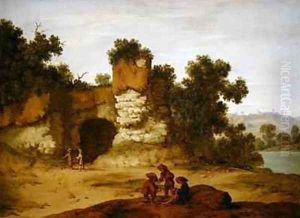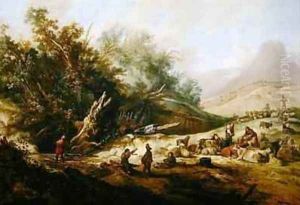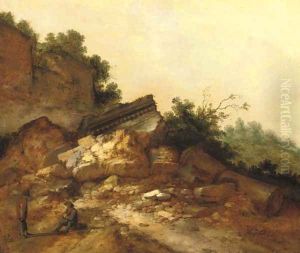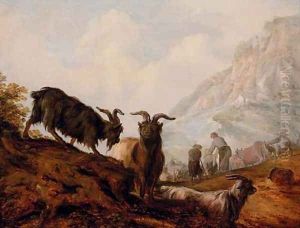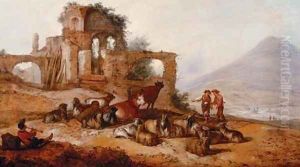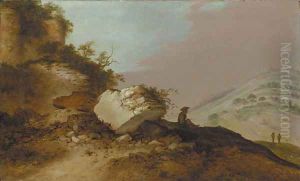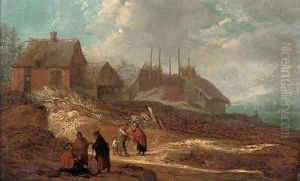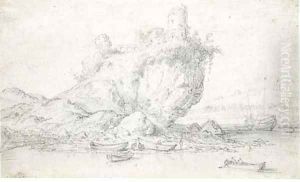Jacobus Sibrandi Mancadan Paintings
Jacobus Sibrandi Mancadan was a Dutch Golden Age painter, born in 1602 in Minnertsga, a small village in Friesland, the Netherlands. His artistic career was not his first vocation; Mancadan initially pursued a career in law and politics. He served as a mayor of Franeker and later as a tax collector. His transition into the world of art is somewhat unusual, as few details are known about his artistic training.
Despite his late start in the arts, Mancadan became known for his distinct style, which often featured Arcadian landscapes with pastoral scenes, including shepherds and classical ruins. These idyllic settings were popular among Dutch art collectors of the time, who appreciated the peaceful countryside as a respite from their urban lives. Mancadan's works were characterized by a warm palette, with particular attention to the effects of light and shadow, a technique that shows the influence of the Italianate landscape painters who were active in Utrecht during the same period.
Mancadan's paintings were not limited to landscapes; he also painted still lifes and portraits. However, his landscapes have had a more lasting impact on the art world and are what he is best known for today. His work reflects the broader interests of the Dutch Golden Age, where there was a fascination with nature, and art was becoming more accessible to the middle class, not just the aristocracy.
Mancadan's life as an artist was relatively short-lived. He stopped painting around 1650 and focused on his duties as a tax collector and his business interests. He died in 1680 in Tzummarum, another village in Friesland. Today, Mancadan is not as well-known as some of his contemporaries, but his work is still of interest to art historians and collectors who appreciate the unique blend of Dutch and Italian influences in his landscapes.
